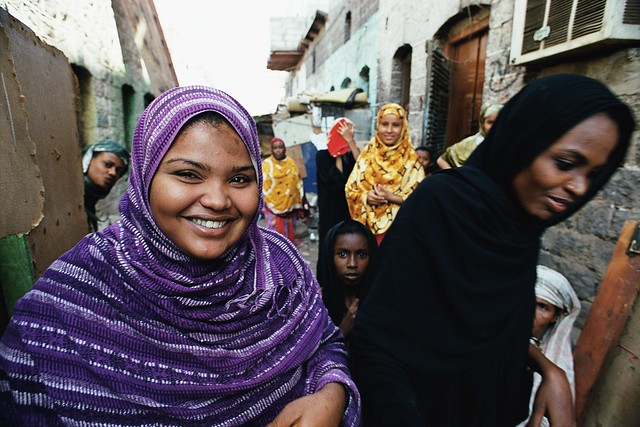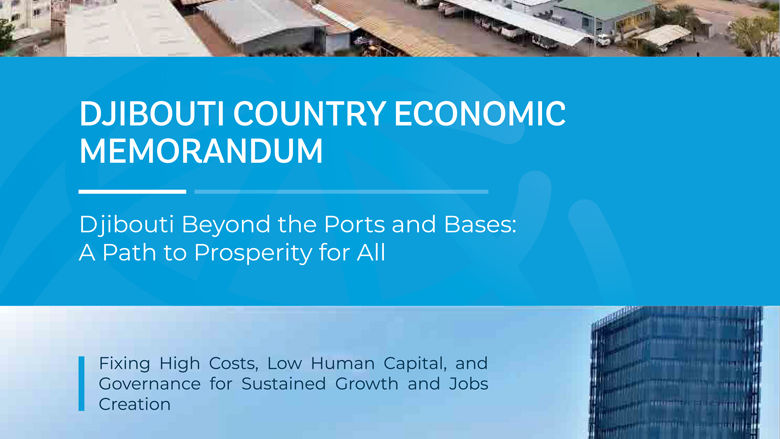Djibouti is one of the smallest countries in Africa, with an area of 23,200 square kilometers and a population estimated at 1,066,000. The size of its economy limits its ability to diversify production and increases its reliance on foreign markets, making it more vulnerable to market downturns and hampering its access to external capital. With less than 1,000 square kilometers of arable land (0.04 percent of its total land area) and average annual rainfall of only 130 millimeters, Djibouti depends on imports to meet its food needs.?
Djibouti’s strength lies in its strategic location at the southern entrance to the Red Sea, making it a bridge between Africa and the Middle East. Adjacent to some of the world’s busiest shipping lanes, it hosts military bases for China, France, Italy, Japan, the United States, and the North Atlantic Treaty Organization (NATO), as well as for other countries with forces supporting global anti-piracy efforts.?
Djibouti’s economy accelerated in the second half of 2024, driven by a surge in port activity that has placed the country at the heart of a shifting global trade landscape. Port operations jumped by 31.4 percent year-on-year in the second half, propelled by a 239.5 percent jump in transshipment volumes, as shipping companies diverted routes around the Red Sea conflict zone. This shift in global maritime traffic, which now often skirts the Red Sea in favor of longer but safer routes around Africa, has transformed Djibouti’s port into a pivotal hub for Asia-Europe trade. As a result, real GDP growth for 2024 has been revised upward to 6.0 percent, slightly higher than earlier forecasts. Yet, experts warn that this growth may be fleeting—once regional security stabilizes and Red Sea shipping lanes reopen, Djibouti could face a sharp reversal in port activity, with ripple effects on the broader economy.
Despite persistently high energy prices, domestic production and consumption remained resilient, growing by 3.8 percent and 7.0 percent respectively in the second quarter, pointing to gains in efficiency. However, the construction sector shrank by 21 percent, hampered by ongoing supply chain bottlenecks.
On the inflation front, Djibouti has largely kept price pressures contained, thanks in part to its currency’s peg to the U.S. dollar. Inflation averaged 2.2 percent in 2024, driven modestly by food and energy costs. Economic growth has also helped to reduce poverty: the share of people living under the international poverty line fell from 19.1 percent in 2017 to 15.5 percent in 2023, with a further decline to 14.5 percent expected in 2024. Nonetheless, poverty remains relatively high at 35.5 percent when measured by lower-middle-income thresholds.
Public finances have shown notable improvement. After running a deficit of 3.3 percent of GDP in 2023, the fiscal balance swung to a 0.2 percent surplus in 2024, thanks to restrained government spending and surging port-related revenues. Still, public debt remains elevated at over 60 percent of GDP, much of it tied to state-owned enterprises, and external arrears account for 2.8 percent of GDP.
Externally, Djibouti’s trade balance turned positive, recording a 10.1 percent surplus, fueled by robust exports and transshipment gains. But foreign reserves dipped, weakened by ongoing debt repayments, with reserve coverage of the money supply falling short of the 100 percent mark—hovering at 72.9 percent in September 2024, a sign that the currency board’s stability demands close monitoring.
The medium-term outlook remains broadly positive, though not without risks. A sharp drop in oil and metal prices is expected to soften the blow of persistent trade policy uncertainty, helping lift real GDP growth modestly in 2025 compared to the previous fall forecast. Looking ahead, growth is projected to average 5.0 percent in 2026–2027, driven by rising logistics revenues, re-exports to Ethiopia, and major infrastructure investments in Damerjog Port and the DDID Free Trade Zone.
Nevertheless, risks loom large. Djibouti’s dependence on Ethiopia-bound trade and regional stability leaves it exposed to shocks, including prolonged Red Sea disruptions, refugee flows, potential trade route shifts to Somaliland’s Berbera port, and delays in necessary fiscal reforms. Even as Djibouti navigates its current boom, the long-term challenge remains sustaining growth amid shifting geopolitical tides.
Last Updated: Apr 24, 2025






